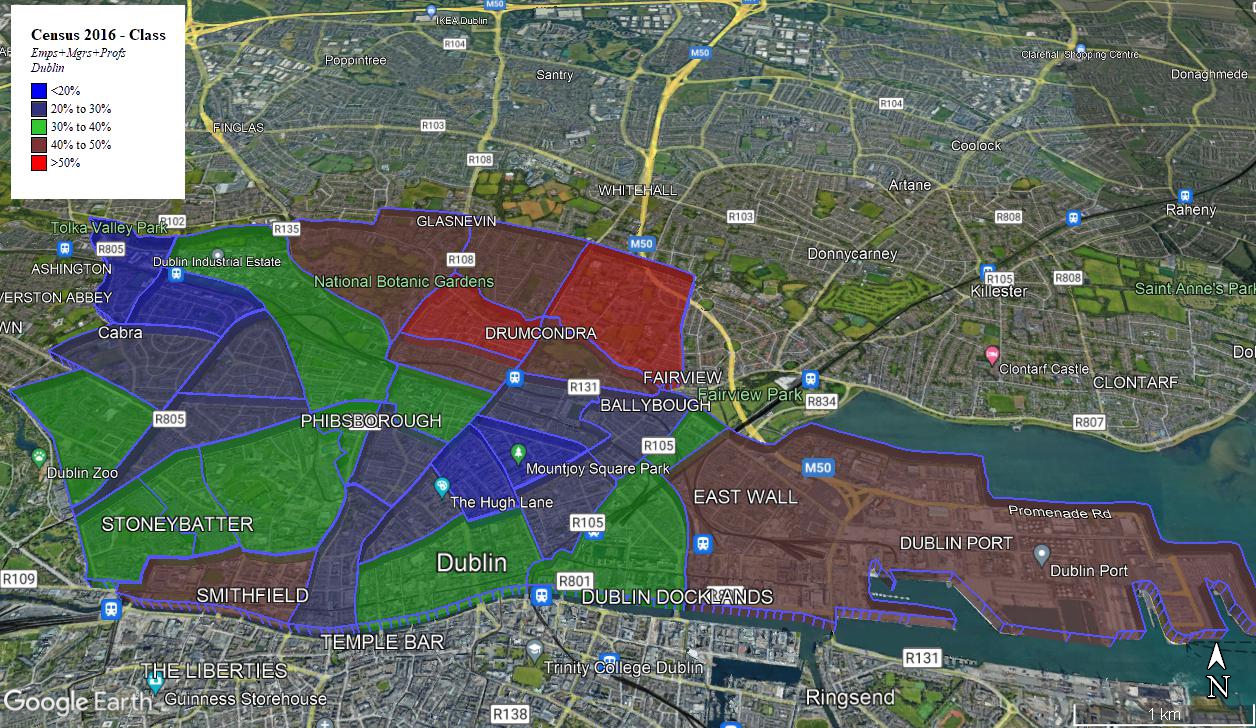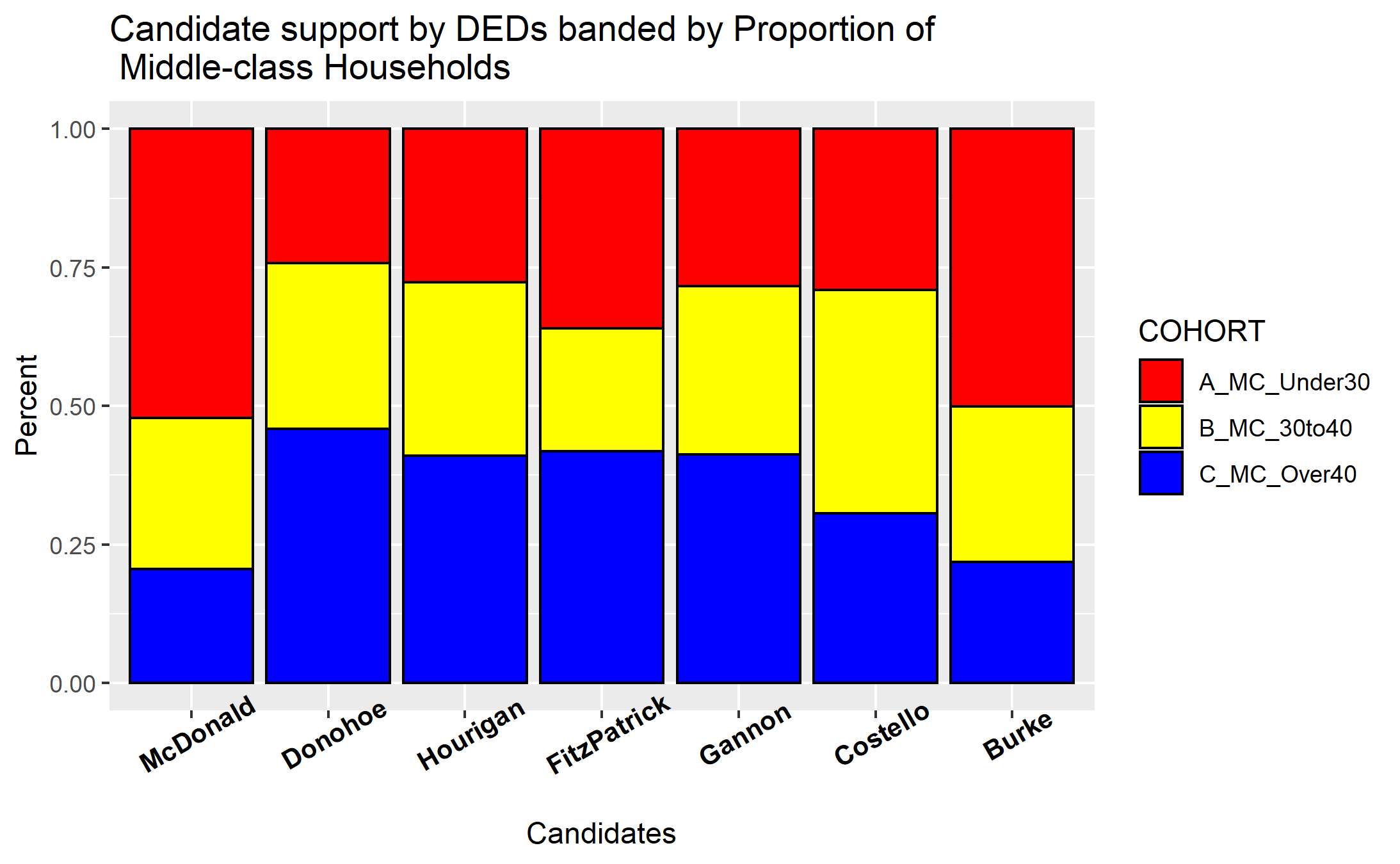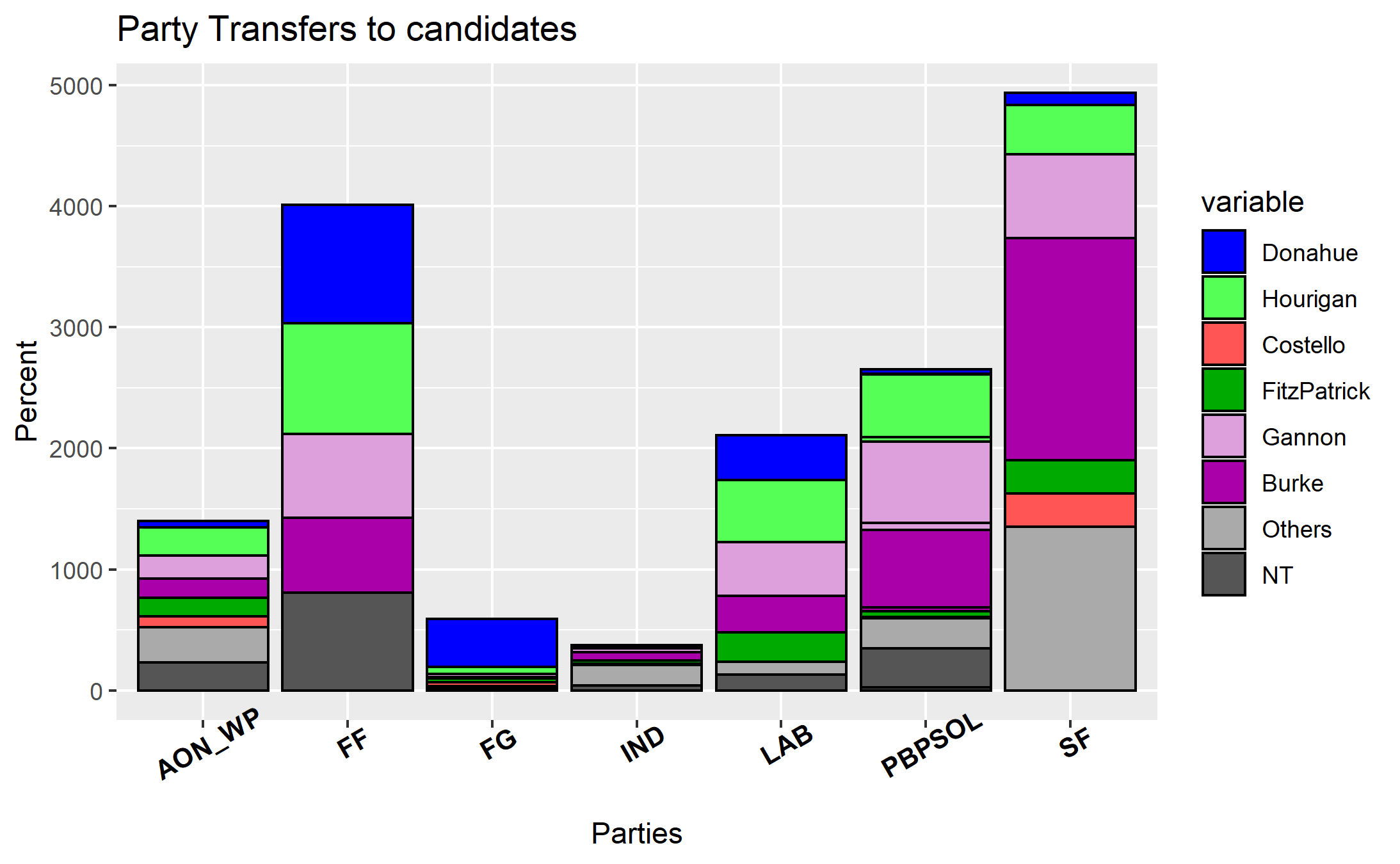Neasa Hourigan has – at least temporarily – departed the Green Party fold and now represents Dublin Central as an Independent. This means the total number of years that Dublin Central has hosted a Green TD is just over two – it remains to be seen whether Hourigan will come back under the party whip to augment that total.
Dublin Central wouldn’t hitherto have been considered natural territory for the Greens as it historically has a strongly working-class population in the Inner City and in Cabra, but in the last two decades there has been an increasing younger middle-class presence.

The social structure of Hourigan’s vote was broadly similar to those of Gary Gannon (Social Democrats) and Paschal Donohoe (Fine Gael) – roughly half their vote came the more middle-class parts of the constituency (40%+ EMP households), a quarter from the more working-class parts (under 30% EMP households), and a quarter from more socially mixed areas (30-40% EMP households). Mary Fitzpatrick (Fianna Fáil) also had a similar profile, but took a slightly larger share of her vote from the more working-class areas.

By contrast, both Mary Lou McDonald (Sinn Féin) and Christy Burke (Independent, formerly Sinn Féin) took half their vote from the more working-class areas and less than a quarter from the more middle-class areas.
Overall the percentage of EMP (Employer, Manager and Professional) households rose from 28% in 2006 to 33% in 2016; the increase was more pronounced in Drumcondra on the northern edge of the constituency where the percentage of EMP Households rose from 40% to nearly 50%, and also in the areas of Smithfield and Stoneybatter closer to the quays where it rose from just over 30% to 40%. Neasa Hourigan polled well in both of these regions.

Hourigan polled best along a line running north to south through the central west of the constituency taking in Drumcondra, Glasnevin, Phibsborough down to Smithfield and Stoneybatter. Her best polling stations were Stanhope Street (17%), Stoneybatter (17%), St Peter’s in Phibsboro (21%) and the two Drumcondra polling stations (19% and 18%)
As I alluded to earlier – the Green Party history in Dublin Central is not a many-storied one. Ciaran Cuffe caused a surprise by winning a seat in the North Inner City in the 2014 Local elections, but before that the Greens had never won a seat in the Dublin Central area at either local or national level – the closest anyone had come was Dermot Hamilton in the Drumcondra Electoral area in 1991 who was 300 votes behind Roisin Shortall on the final count.
Hourigan was elected on the 1st count in the Cabra-Glasnevin area in the 2019 local elections, but she had to rely on transfers in the General Election to secure her seat. Her largest tranche of transfers (915, 23% of total) actually came from the Fianna Fáil candidate, Mary FitzPatrick. She also benefitted from decent transfers from Joe Costello of Labour (512, 24% of total) and the Solidarity-People Before Profit candidates (518, 22% of total).

By contrast, she only received 403 transferable votes (8%) from Mary-Lou McDonald’s surplus of 4935 votes – well over a third of the surplus went to her former Sinn Féin colleague Cllr Christy Burke who found himself getting more votes on the second count than he had on the first. On the final count, Hourigan was elected with 1,387 votes to spare over Christy Burke and also 833 votes ahead of Gary Gannon of the Social Democrats. In other words, her seat is quite marginal.
The current Tallyriffic projection – based on regional swing – finds that she would be unlikely to make the final count with a second Sinn Féin candidate replacing her in the Dail. This projection it should be noted doesn’t take account of potential changes in transfer patterns – presumably transfers from left-leaning candidates will be less forthcoming to Green candidates at the next election.